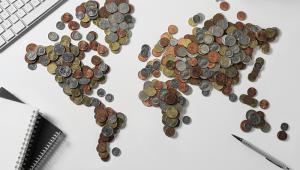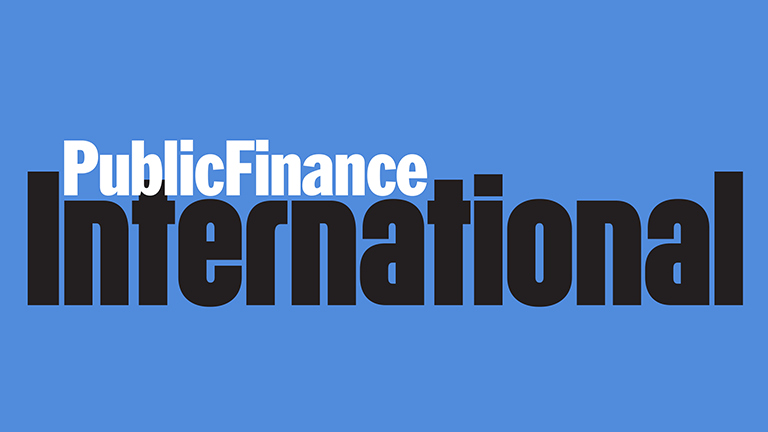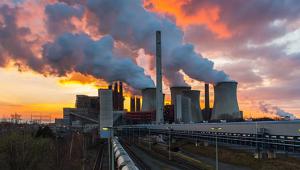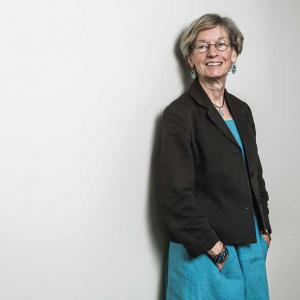By Matt Mercer | 13 November 2012
From West to East and North to South, urbanization continues across the world. But as huge new cities emerge across the rapid-growth markets, how can smaller cities continue to compete? We speak to the mayors of Perth, Adelaide and Wellington to find out
As capital flows shift and skilled workers move freely among developed and emerging markets, cities have become more interconnected than ever before. And that’s just for starters. Today, megacities have become the norm. From continent to continent, cities such as Guangzhou, São Paulo and Mumbai have attracted tens of millions of inhabitants to their borders and have evolved into key economic players in their own right.
Such trends — which continue to proliferate — have implications not just for the global economy but also for more established metropolises. Competition for resources — the people and capital that drive innovation — is intensifying. Resources will migrate to those centers that have the richest combination of infrastructure, services, investment and culture. With the global economic picture remaining uncertain and national government funding often no longer viable, smaller cities are under pressure to find new ways to grow and thrive.
In Australia, Lisa Scaffidi, Lord Mayor of Perth, is prioritizing the rapid economic development of her home town. Her colleague, Stephen Yarwood, Lord Mayor of Adelaide, is working to realize his aim of delivering a high-quality, technological and creative urban environment. A city blessed with a world-renowned natural environment is Wellington, capital of New Zealand. Its Mayor, Celia Wade-Brown, tells us how visitors can experience the wild outdoors — swimming with dolphins, surfing and windsurfing — and in just 15 minutes be back in the center of the city.
Each of these cities, then, is focusing not on size but rather on their own individual niche — and rightly so. Harnessing their individual strengths represents the best chance for each city to safeguard their position on the world’s urban map, thereby guaranteeing a prosperous future for its citizens of today — and tomorrow.
Moving Perth forward
Recently re-elected as Lord Mayor of her home city of Perth, Lisa Scaffidi is focusing on taking her city to the next level.
What is your vision for Perth?
My personal vision is one of pro-development and capacity building. I have a great passion and interest in economic development; looking at how we can encourage other industry sectors to develop.
Our strength is coming out of the predominance of the resources sector. This is a broad term that encompasses iron ore, liquefied natural gas and oil. On the back of this industry, we now have so many companies established and creating a strong presence in Perth as they develop projects up to the north west of our state.
A number of these are American and they all now have purpose-built offices in our city. I think Perth has one of the largest American ex-pat workforces and also high levels of American investment in terms of the construction of these projects.
Has this strength insulated you from the global financial crisis?
It’s very much helped us get through the past few years. We’ve had a very low level of unemployment. We’ve got a skills shortage, if anything, and we’re often talking about the need to bring in skilled workers on different visas. That’s great and it is working but it is also causing us to create more housing affordability and availability, so people aren’t displaced. A lot of our traditional blue-collar workers are finding it tough because what we’re seeing is a two-speed economy as a result of the strength of the resources sector.
Is tackling this one of your key priorities?
Yes, but mayors in Australia don’t have the all-encompassing powers that mayors in the United States do, for example. But while I’m predominantly focused on the Central Business District (CBD), I’m very conversant on these issues because, even in the city of Perth, we’re doing a housing development ourselves — building a unit for key sector workers — to encourage a stronger presence of people in the center of the city.
I’m very much focused on capacity building in the city. We had spoken about developing our waterfront area for decades and this project has now started. We are also working on a new project, The Link, which involves sinking the railway lines that had separated the city center from our entertainment district of Northbridge. The project will recreate about 20 hectares of space on land that was otherwise not usable. Another development is Riverside — that’s to the east of the city — and this is containing new apartment and hotel developments. We have a big shortage of hotels in Perth and are crying out for hotel developers to consider our city.
How do you go about funding these projects?
The state government has committed A$440m for civil works. The city of Perth already owned the land and has transferred this to the state government. A rough estimate of the land value is A$80m. Private consortia will come together to make proposals for the different sites and obviously, over time, the money they will give the government will hopefully neutralize the initial costs.
Have these projects strengthened your links to entrepreneurs?
Absolutely. I’m very pro-business and pro-development. I see the Lord Mayor as someone who connects the dots. I see the role as one of collaboration, coordination and negotiation — connecting people with opportunities.
What would make your job easier?
It would be easier if our Government — Federal and state — realized we need to be much more outwardly focused than inwardly focused. We need to be able to balance our time and be seen to be a lot more proactive when it comes to encouraging business opportunities in Australia. We are only a 26 million population — a blip on the global population radar screen — so we need to
leverage our opportunities to the max. The biggest cities have been there before us so we can learn from them and work smarter, not harder.
I also think we need to work on Brand Australia. We need to work out what we want to be in the 21st century. For example, we’re in the same time zone as 61% of the world’s population. We’re a good gateway to China and we need to assist countries like the US and UK to come in to Asia through us. It blows me away sometimes how little people overseas know about Perth. We’re the third-largest city in Australia. It’s just a crazy thing to me that people don’t have much awareness of Western Australia as a whole, and of us being its gateway on the coast.
“For Adelaide, it’s all about lifestyle”
Having spent his working life as an urban planner, Stephen Yarwood knows his cities. Adelaide’s youngest ever Lord Mayor tells us about Adelaide’s buzz and his plan to create a niche world-class urban environment.
Why should people visit Adelaide?
Adelaide is the eighth most livable city on the planet, according to the Economist Intelligence Unit. We’re the 350th biggest city in the world but one of a very few that are virtually entirely surrounded by Park Lands. We have a Mediterranean climate and beautiful beaches. It’s the sort of place where, if you come for a couple of days, you might think there is not a whole pile to do but if you stay for a week or two, you won’t ever want to leave
What are your top three challenges?
Transport is a key focus for us. Australia has a very low density urban environment. We’re highly car-dependent. About 65% of all daily commuters to Adelaide’s CBD use cars and we actually have more car parks in our CBD than any other city in Australia. But we’re also a flat city with wide roads so
it’s the perfect city to get around by bike. I am determined to make Adelaide the best cycling city in the southern hemisphere and we are progressively rolling out a number of cycling-friendly initiatives to make pedaling in the city safer.
The second biggest challenge is housing, and particularly housing affordability and diversity. We have recently announced an overhaul of city planning rules, and the state government has abolished stamp duty for off-the-plan apartment sales in the CBD for the next two years. Combined with this is assistance for homeowners to get into the market and also making it more
appealing for property developers to invest in the city.
I think the third key challenge — which goes hand in hand with transport and housing — is that, like every city, we are judged by the quality of our urban core. We’re very much focusing on city vibrancy. Our aim is to have more pedestrianized spaces with more public art and live music
— all to bring the CBD to life.
Which cities do you most admire?
I’m a qualified urban planner and have been studying the future of cities my whole life; I’m in the business of cities. I’m determined to make Adelaide a globally competitive city — not the biggest, but a niche, highquality, technological and creative city.
What cities inspire me? I’ve absolutely been inspired by my trips to Copenhagen — its walkability and cycling, and its integrated transport. The city of Austin in Texas is edgy and quirky, as well as being the live music capital of the world. Their focus on arts and culture is much to be admired. I’m also really passionate about Asian cities such as Hong Kong for its vibrancy, public transport infrastructure and nighttime economy. I am a big fan of Melbourne — they’ve got twice as many outdoor dining seats than any city in Australia, despite not having the best climate. Their consistency of urban design has been absolutely magnificent.
How do you go about funding new infrastructure?
We have a system in Australia where local government authorities are rather small and so partnerships are very important. The City of Adelaide and the state government has historically had a number of tensions but I’ve been very fortunate in being able to help build a better and stronger working relationship. We have a focused and shared vision now and this means we can prioritize investment. Certainly, PPPs are very important in the CBD. In the past, Australia has relied strongly on the public sector to do everything — there is this expectation that government will fix it but we’re really trying to work with businesses to give them the impetus to invest in the future of our city.
What would make your job easier?
Social media has made a difference. Things like Twitter — people say I am authentic in that medium. Having a positive social media following has helped broaden my message and generate community support.
I personally think one of the biggest issues facing good governance is having an informed media and I will therefore continue to work on this notion of having qualified and educated media reporting on urban issues and affairs. So instead of them talking about the cost of car parking, they can talk about the cost of traffic congestion on the productivity of our nation.
One of the challenges we’ve got is to educate businesses on the future of cities. A traditional business model has businesses wanting a car park outside their office and many car parks within walking distance. But in the future, it’s not about creating spaces for cars; it’s about creating spaces for people. This is one of the biggest issues for cities as a whole — not just Adelaide.
Resistance to this type of change is one of the biggest challenges we face.
“Wellington is one of the best places in the world”
The city of Wellington in New Zealand is a long way from the London birthplace of Celia Wade- Brown. She tells us about the world’s southernmost capital city and her role as its mayor.
What are you most proud of in Wellington?
The city is a really interesting combination. There is the wild outdoors — you can go surfing, windsurfing, swim with dolphins — but then, 15 minutes later, you can be in the center of the city and be surrounded by world-class ballet, theater and national museums.
Wellington is a very connected to the world through its international community. I am a convert to Wellington. I arrived in the early 1980s and expected to stay for only a few years but I fell in love with the city and stayed, so I am obviously convinced it is one of the best places in the world.
We do have some challenges but, increasingly, physical isolation isn’t one of them — and we’re on track to introduce direct flights to Asia. Culturally, Wellington connects to all corners of the globe — thanks in part to our international community and diplomatic connections — but we’re also a contributor of culture to the world through our Oscar-winning film production, with much of the Lord of the Rings, Avatar and District 9 produced here.
I became mayor on the basis of three factors. Firstly, good transport links. I’m a keen cyclist myself and we’re a very walkable city. Wellingtonians are high users of public transport and we need a step change in its quality. Secondly, clean technology. I believe renewable and clean technology is the route to more jobs and economic growth. And thirdly, citizen involvement. I work hard to be an accessible mayor and engage with many different groups. Council recently completed the city’s long-term vision and the 10-year budget, and I was really pleased with the
huge public participation in those ventures.
Our vision is “Wellington towards 2040: Smart capital,” which focuses strongly on being a connected city, encouraging economic growth in really exciting areas like innovation, technology, film and the knowledge-based economy. We’re aware of the need to capitalize on our strengths, so our compact form has created a CBD that truly is the engine room for the region’s economy.
What are the main elements of the new vision?
We are emphasizing that we are the capital city; close to government and with a highly qualified and knowledgeable workforce — more than a third of our jobs require a tertiary education.
There are four pillars that capture our priorities. Firstly, “the connected capital.” Some of these connections are person-to-person but it’s also about the virtual connections. The population of New Zealand as a whole is a lot less than a lot of cities in the world — but, as our virtual connections improve rapidly, there’s no reason why we can’t compete and interact globally. We’re encouraging better cable connectivity over the Pacific at one end of the scale, which will be a huge boost to the way New Zealand connects to the world. At another end we’ve got free WiFi throughout the CBD, so people can connect with family, friends, and their workplace, or get all the information they need while they catch a bit of sun beside our sparkling harbor.
Secondly, we are “people-centered.” Even though people think of Wellington as British or Polynesian, we have 85 different ethnicities. Being people-centered means we are also connecting to our expats around the world. About one fifth of New Zealanders live abroad and, by keeping up with the latest developments, they can act as our ambassadors and encourage more of the world’s smartest talent to consider the opportunities Wellington has to offer. Our first people, Māori, are increasingly visible in art, architecture and economic power.
We have a “dynamic” CBD as our third pillar, focusing on its walkability, public art and waterfront access. Indeed, our waterfront is a large plaza that is equal parts a recreational and entertainment precinct, commercial hub, hospitality precinct and outdoor art gallery. People often remark how easy it is to get around Wellington — and, as a home to more cafes per capita than New York City, that’s a good thing!
And the fourth pillar is “eco-city.” In Wellington, we have one of the biggest wind farms, harnessing our famous gusts to power the equivalent of 75,000 homes. We’re engaging with wave and tidal energy as well, and so far the experiments have proven worthwhile — although it appears the Cook Strait is so powerful, we’ll need stronger generators to handle the load. The other aspect of eco-city is the biodiversity, and Wellington is blessed with a remarkable asset in Zealandia — an “inland island” only minutes from the CBD — to foster native wildlife while keeping predators out.
I can’t think of any metropolitan area I’ve visited that has more native birdsong than Wellington. Being an eco-city is not just about resources, it’s about a sense of place; we have a marine reserve off the south coast, only 15 minutes drive from the CBD, where our residents can dive — I’ve now done more than 70 dives myself, having started about six years ago. To live in harmony with other species on this planet, locally and globally, is our ambition.
What would make your job easier?
More time in every sense. Whether it is eight days a week, 26 hours a day or another year in my term. I hope the people of Wellington will re-elect me and support the vision going forward, but a sense of urgency to get more things done before the next election is positive. So while I would
like more time, I wouldn’t want it at the expense of democratic input.
One of the things I am passionate about is telling the Wellington story — that you can have a healthy economy, a healthy environment and an inclusive society all at once. A triple win, and it’s not all about trade-offs to achieve this. I want to tell our story more. Technology helps, but there’s nothing like people to spread the message and share their experiences.
Which cities do you most admire?
In China, I was very interested to see how some cities have kept their own identity while embracing new technology and encouraging rapid growth. I was very impressed with Xiamen — one of our sister cities there, the other being Beijing. It’s a very livable city with a thriving economy.
There are cities that I really admire that are very different. I love some of the older cities of Europe — somewhere like Florence for example. But we don’t have that same level of history; we need to create that.
How do you fund your new infrastructure?
We have to think smarter about infrastructure. Before we commit to spending billions on roads, for example, we need to know how much we’ll need them and whether there are much better solutions that are sustainable, responsive to environmental and social changes, and much more affordable in the long run.
Central Government is focused on Roads of National Significance, but I’m not sure that pouring more concrete is the only solution to transport issues. Investing in digital infrastructure — systems that can predict and help manage traffic flows, for example — needs to be explored. Wellington’s size makes it ideal to be a pilot city for this kind of smart transport technology.
One thing I am interested in is a light rail system. We’re working through a long study on this. We can’t expect taxpayers to cover it all so, on a recent trip to Hong Kong, I spoke to people who invest in this type of urban infrastructure. I'm looking at models that include capturing the value increase along the route, leasing airspace at exchanges and partnerships. Wellington’s debt level is prudent and much of it was accumulated in investing in upgrading our sewerage system. Investing in long-term, sustainable infrastructure projects that provide benefits for generations of Wellingtonians is worth going into manageable debt for.
This article fist appeared in the October issue of Citizen Today













